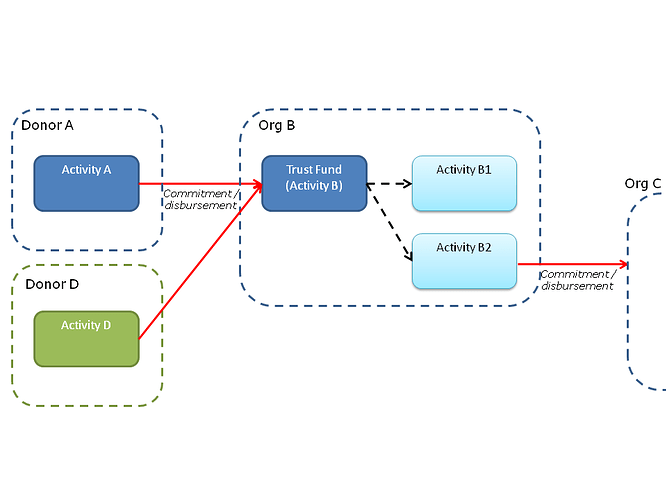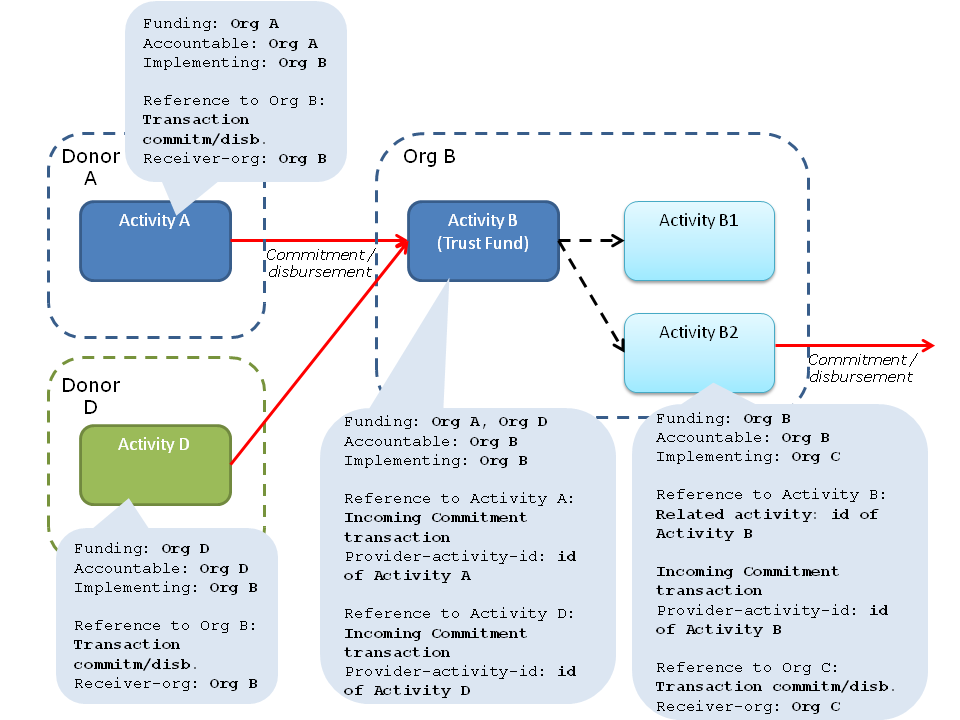Hi everyone,
At the IATI TAG we had a constructive discussion about representing Trust Funds in IATI.
See below the model that I presented during the session, based on the principles in the Netherlands IATI publication guidelines (available here (English) and here (French).
In this case Organisation B is the organisation that manages the Trust Fund (Activity B). The Fund has 2 donors: Donor A and Donor D.
The Trust Fund supports multiple activities, managed through activities B1 and B2 and implemented by external partners - in this case Organisation C.
The IATI elements needed to represent this structure are added below.
During the TAG there seemed to be consensus about this model, but looking forward to hearing your thoughts now that you’ve been able to think about it a bit longer.
Pelle



 – basically I think this is pretty good (though not 100% sure that trust funds should be activities rather than organisations), but maybe a couple of tweaks could make it a bit easier to use this data. Anyway, a few ideas…
– basically I think this is pretty good (though not 100% sure that trust funds should be activities rather than organisations), but maybe a couple of tweaks could make it a bit easier to use this data. Anyway, a few ideas…